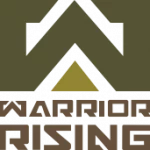General FAQ's
For general information about Warrior Rising’s programs and how they work, please see:
www.warriorrising.org/our-process
Yes. The idea is to instruct you for circumstances that can and are likely to happen in the future. Completion of a module means you understand what is required, not necessarily that you are at that stage in your actual business.
Module 7- Elevator Pitch
Give your pitch to anyone you think fits a potential profile of your customer (when selling, almost anyone could be your customer eventually, that’s why you’re trying to convince them, right?) and ask them the following:
- what is your takeaway about what I’m trying to sell, in your own words?
- would you be willing to have a much longer conversation with me after what I just told you? If not, why not? If so, why? (what interested you?)
Module 22 (Task to Maneuver Units)
You won’t always be the only person in your business. Our goal is to prepare you for that. More importantly , you have to start preparing now so that you can have others to delegate work to. For example, tasks that you are doing now that you don’t necessarily want to be doing forever should be written down to create procedures for otehrs to follow. In addition, writing down how you do things will also help if there is ever an issue with someone making a claim against you. Even a one man business needs written procedures.
Modules 10 (Intro to Terrain Map) and 16 (Terrain Map Conclusion)
The idea of creating a terrain map is to get you to think about your competitive landscape in both visual and conceptual terms and to possibly think of things you might not be thinking of immediately. Yes, eventually we want you to convert it to a written narrative, however, learning through visual depiction is an extremely effective tool to spur thinking and creativity that narrative depiction is not as effective in doing. Narrative is a beter way of documenting after the fact, but not necessarily in spurring creative and “outside the box” thinking. Visual depiction also helps to retain information, better than just words (which is why memory mnemonics work better with pictures).
Module 17 (Laddering)
The idea of laddering is to understand what is underlying someone wanting or not wanting something. In other words, what is truly motivating them. It’s not a matter of asking something specific to your product or service; you will tie their answers to your product or service. You can find out why someone prefers one type of pizza vs another because of their childhood memory of their grandmother making something at home. There’s almost no “wrong” question to ask them. The key is listening to what they are saying and adjust “fire” based on that. At the end of the day a simple “why do you think or feel that way” always works.

